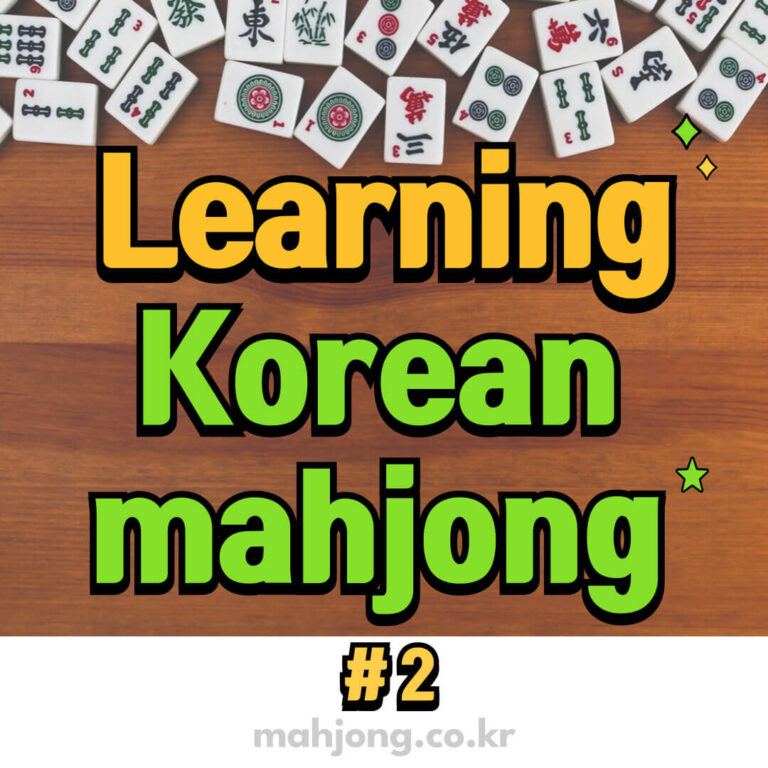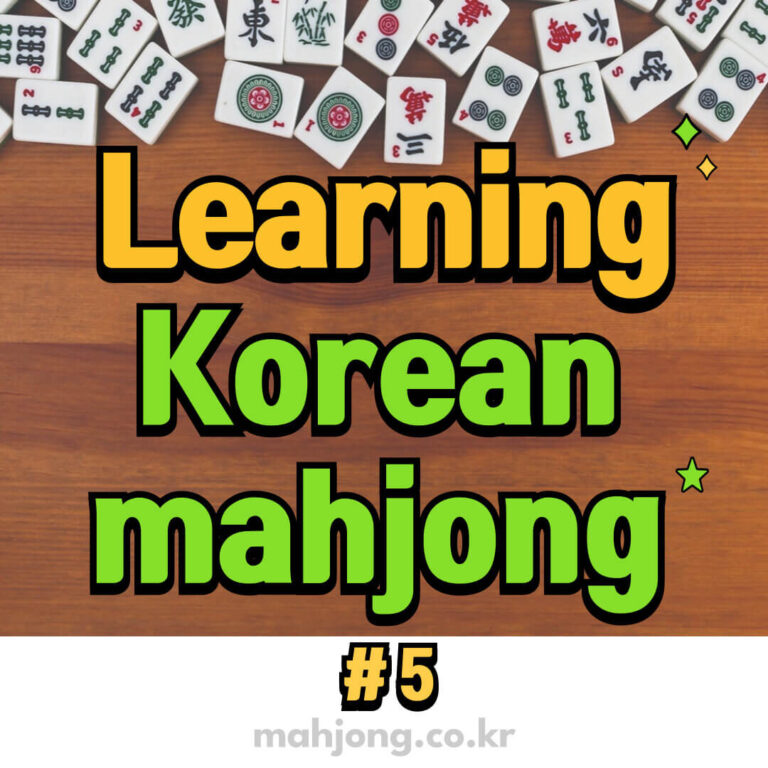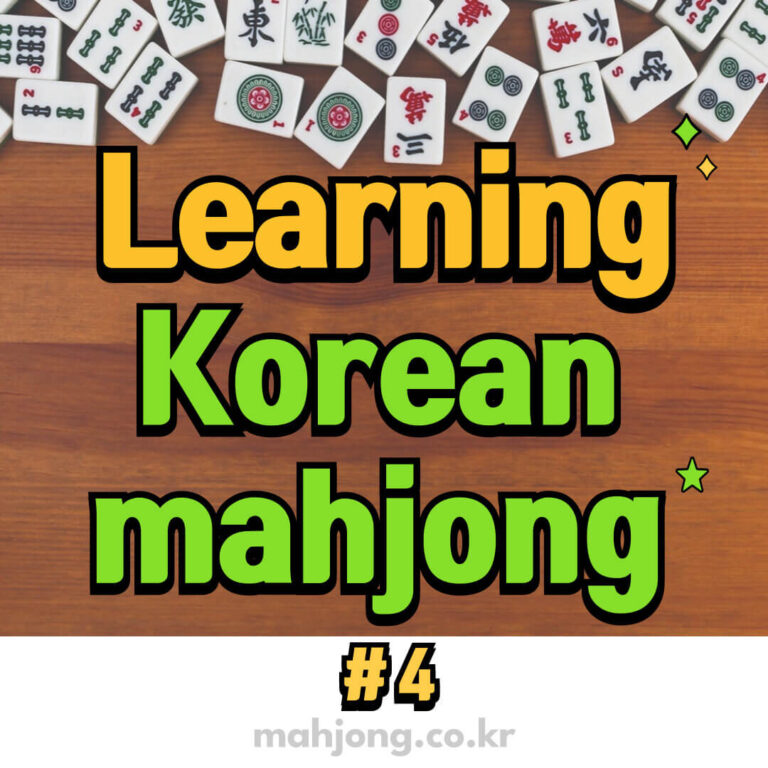Korean 2-Point Mahjong Ⅵ
– Standard Rules and Scoring for Beginners
Chapter 6. The Preliminary
To play Mahjong, the dealer and the dealer’s seat must be decided before the first game begins. Once a dealer’s seat has been decided, other three players’ seats will also be decided easily. These three players are called “Non-Dealers”, “Non-East Players”, or “Non-East Winds”.
If there is no “east Indicator”, it is recommended to place a pair of dice on the right side of the East Wind. This way, every player will always know which player is the East Wind.
Chapter 6.1 Selection of seats
A dealer or dealer’s seat is called the “East”. It is also known as “East Player”, “East House”, and “East Wind”. The player to the dealer’s right is the “South” (aka “South Player”, “South House”, and “South Wind”), The player to the dealer’s opposite is the “West” (aka “West Player”, “West House”, and “West Wind”), and the player to the dealer’s left is the “North” (aka “North Player”, “North House” and “North Wind”).
The order of the game starts in the East and goes to the South, West and North in a counter-clockwise direction.

There are two ways to select the seats in Korean 2-Point Mahjong: One is to use dice and the other is to use four wind tiles.
➊ By rolling a dice
The four players sit around the table randomly and roll the dice in turn. The player with the highest number becomes the dealer, the East Wind. The second highest number is the South Wind, the third highest number is the West Wind, and the lowest number is the North Wind. Please see the sqare above.
➋ By choosing wind tiles
After four players throw dice by turns, the player with the highest number becomes the “temporary dealer”. The temporary dealer shuffles four different wind tiles (a east, south, west, and north) and place the tiles faced down on the table.
Players arbitrarily pick a wind tile to determine where they will be seated. The temporary dealer must be the last one to take a tile. Depending on the tiles each player has picked, the players take their own seats at the table. The player who has drawn the east tile may sit the east side (A) of table.
Chapter 6.2 Total Number of Hands (Games)
Korean 2-Point Mahjong typically races in a part-time style of play (usually half a day) just like soccer, so the exact number of games is not fixed. These days, however, friendlies including official games also tend to be played in 4 rounds or 2 rounds. The total number of games will depend on whether the players choose four rounds, two rounds, or part-time style.
In the part-time style, unlike the round way, the winner of the previous game will always be the dealer (the East) of the next game. Be sure to remember this.
➊ 4 Rounds (Exactly 16 games)
The complete game of Chinese mahjong has four rounds. Each round consists of four hands (games), and all games are played in cycles (the wind rotates from East —> South —> West —> North).
Everybody must be the dealer once in each round. In the first game of the first round, the player who chooses the east tile usually becomes the dealer (the East) who is starting a game.

In the Second game, the South player of the first game becomes the new East Player as counter-clockwise order. Likewise, in the third game, the West Player of the first game becomes the new East Player, and in the fourth game, the North Player of the first game becomes the new East Player in turn.
After a game is over, the position of the seat (wind) must move counterclockwise like this. It is the same even if there is a draw. Therefore, 4 rounds has exact 16 games in total.

When the player who began the game as East becomes East again, the 1 round ends, and 2 round starts. In the first game of the 2 round, the player who was South player in the first game of the 1 round becomes the new East. When forth game of the 4 round is finished, a complete game finally ends.
❷ 2 Rounds (More than 8 games)
The complete game of Japanese Riichi Mahjong has 2 rounds, each of which consists of a minimum of 4 hands (games). The round’s wind rotates from East to South, West and North.
However, when a dealer (the East) wins the game of east wind, the dealer (the East) can get to stay dealer in the next game, too (East can stay East). This means that one game has been added to the round. Therefore 2 rounds in Rich Mahjong could be more than eight games.

The dealer also gets to keep the East Seat when there is a draw, or severe offence of other players. But not a “ready hand”, the dealer seat rotates to the next. When forth game of the 2 round is finished, a complete game ends in Riichi Mahjong.
Chapter 6.3 Prevalent Wind & Seat Wind
The four rounds named according to the four winds have their respective “prevalent winds”. They are also called “prevailing winds” and “dominant winds”.
The prevalent wind in the first round (East Wind) is east. The second one (South Wind) is south, the third one (West Wind) is west, and the fourth one (North Wind) is north.
If a player has a set of triplet or quadruplet which corresponds to the round in progress (e.g. 1 Round – East, 2 Round – South), the player can earn 1 basic point as a winning hand (yak). A melded set (pung/kong) is also o.k.

In the part-time style, the point of “prevalent wind” is usually not allowed (has zero point). However, some local rules may allow an east set of triplet or quadruplet to the “prevalent wind” in all rounds.
If a player has a set of triplet or quadruplet which corresponds to the player’s seat wind direction in the game (e.g. the East – east, the South -south), the player can earn 1 basic point as a winning hand (yak). A melded set is also o.k.






